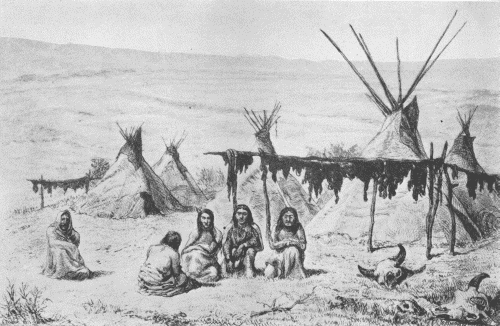BUREAU OF AMERICAN ETHNOLOGY BULLETIN 77 PLATE 1
BUREAU OF AMERICAN ETHNOLOGY
BULLETIN 77
VILLAGES OF THE ALGONQUIAN, SIOUAN,
AND CADDOAN TRIBES WEST OF
THE MISSISSIPPI
BY
DAVID I. BUSHNELL, Jr.

WASHINGTON
GOVERNMENT PRINTING OFFICE
1922
LETTER OF TRANSMITTAL
Bureau of American Ethnology,
Washington, D. C., January 4, 1921.
Sir: I have the honor to transmit the accompanying manuscript,entitled "Villages of the Algonquian, Siouan, and Caddoan TribesWest of the Mississippi," by David I. Bushnell, jr., and to recommendits publication, subject to your approval, as a bulletin of this Bureau.
Very respectfully,
Dr. Charles D. Walcott,
Secretary of the Smithsonian institution.
PREFACE
When Louisiana became a part of the United States the greatwilderness to the westward of the Mississippi was the home ofmany native tribes, or groups of tribes, retaining their primitivemanners and customs, little influenced by contact with Europeans.Their villages were scattered along the water courses or skirted theprairies, over which roamed vast herds of buffalo, these serving toattract the Indians and to supply many of their wants—food, raiment,and covering for their shelters. But so great are the changeswrought within a century that now few buffalo remain, the Indianin his primitive state has all but vanished, and even the prairies havebeen altered in appearance. The early accounts of the region containreferences to the native camps and villages, their forms andextent, tell of the manner in which the habitations were constructed,and relate how some were often removed from place to place. Extractsfrom the various narratives are now brought together, thusto describe the homes and ways of life of the people who onceclaimed and occupied a large section of the present United States.
